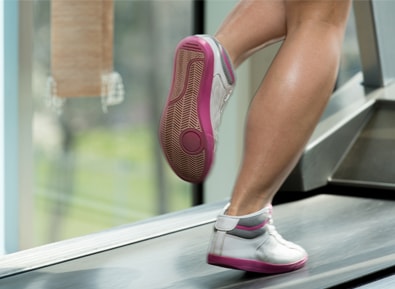
Many problems in the foot and ankle can be associated with problems “higher up” in the leg. In particular, the gastrocnemius muscle plays an important role and can be linked to many foot and ankle pathologies. The gastrocnemius muscle is the biggest muscle in the lower leg and together with the soleus muscle forms the Achilles tendon.
High heeled shoes and prolonged periods of sitting at a desk can be linked to reduced flexibility of the calf. Often a genetic predisposition is responsible for the reduced “dorsiflexion” of the ankle/foot which means one has not enough movement “upwards”. This tightness can lead to many common problems in particular Achilles tendinopathies, plantar fasciitis, forefoot overload, hallux valgus and hallux rigidus, stress fractures, metatarsalgia and sesamoiditis. A dedicated stretching regime is essential in order to improve the flexibility of the calf muscle. In a few cases this may not prove sufficient and if symptoms persist a minor operation can be performed either on its own or in association with other operations to eliminate the problem. This so-called “proximal gastroc release” is a very small operation where the “tight portion” of the gastrocnemius muscle (aponeurosis) is cut which then allows the muscle to stretch appropriately. The procedure is done as a day case and does not need any “protection” afterwards. Patients can walk unaided and after a few days of rest can resume most activities again.
Martin Klinke is a leading foot and ankle specialist and available for appointments at leading centres in London.
Martin Klinke is one of the leading ankle surgeons in London. With an impressive background in both Orthopaedics and Sports Medicine, he takes a comprehensive and compassionate approach to your treatment. He’s a trusted, reputable surgeon who can help get you back in the game!
Mr Martin Klinke offers outpatient consultations at HCA at the Shard, Chiswick Outpatient & Diagnostic Centre, HCA Canary Wharf, BUPA Cromwell Hospital and the New Victoria Hospital. He operates from London Bridge Hospital, BUPA Cromwell, and New Victoria Hospital and the Hospital of St John and St Elizabeth.
You can find all his patient reviews here.
